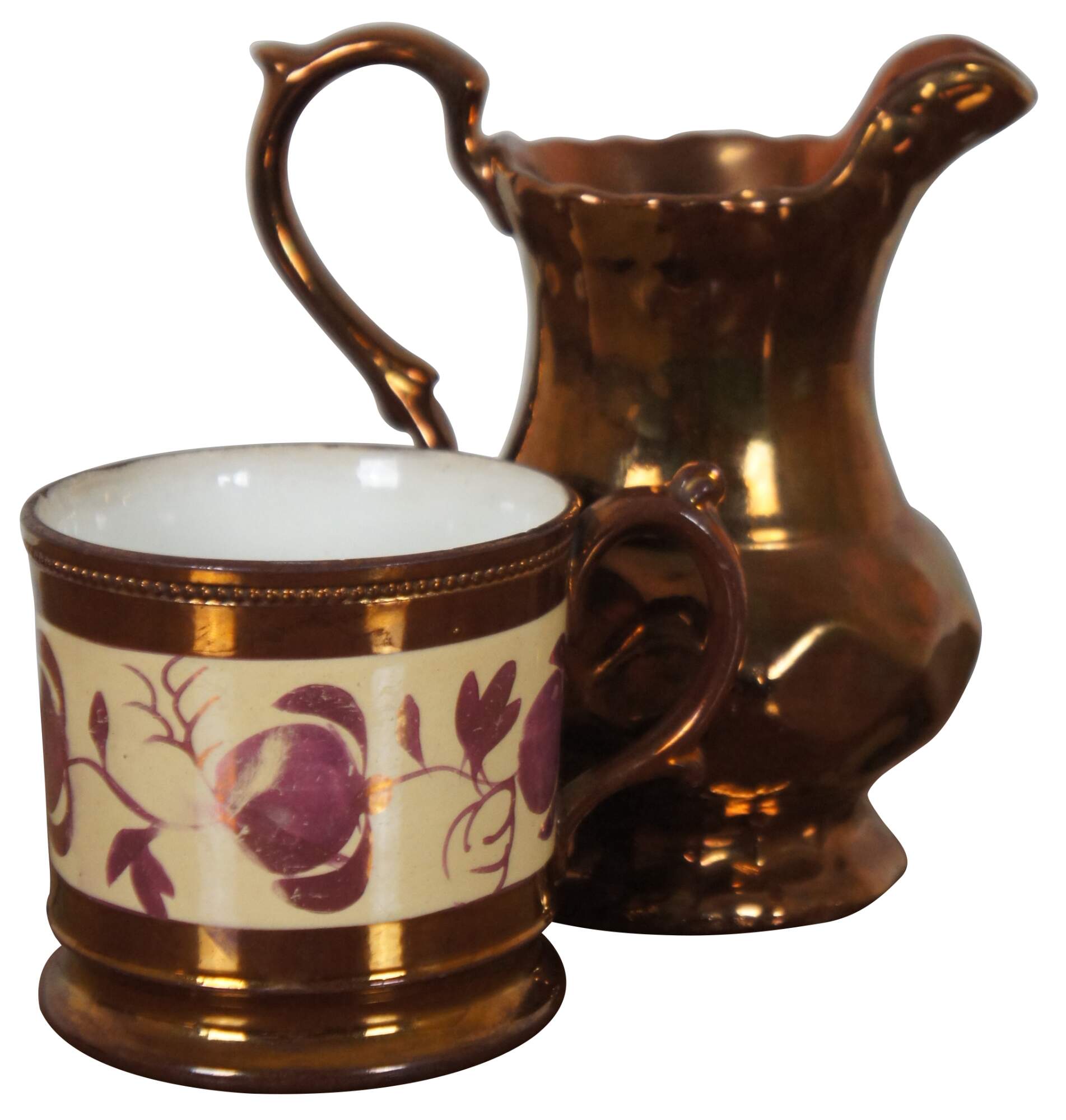
Shipping:
Free Shipping Included
Delivery:
Estimated 2-15 Business Days
Payments:
Credit Card, Check, Cash, PayPal, Apple Pay, Venmo
Returns:
30 Days 100% Money Back Guarantee, Buyer Pays Return Shipping
Description
Antique 19th century copper lustre ware porcelain water pitcher with a diamond design around the middle, paired with a large mug with a cream colored band around the middle accented with a pink lustre vine of roses. “Lustreware or Lusterware (respectively the spellings for British English and American English) is a type of pottery or porcelain with a metallic glaze that gives the effect of iridescence. It is produced by metallic oxides in an overglaze finish, which is given a second firing at a lower temperature in a ""muffle kiln"", or a reduction kiln, excluding oxygen.
The technique of lustreware on pottery was first developed in Mesopotamia (modern Iraq) in the early 9th century. Initially mostly decorated with geometric patterns, by the 10th century an Iraqi style with the design dominated by one or two large figures developed. After the Fatimid conquest of Egypt in 969, it became a great centre of lustreware production until the Fatimid Caliphate fell in 1171, soon after the potter's quarter of the capital Fustat (Cairo) was burned in 1169. It is thought that the Fustat potters dispersed to both Syria and Persia, and lustreware appears there about this time; later the devastating conquests of the Mongols and Timur disrupted these industries. The technique had spread to al-Andalus (the Islamic Iberian Peninsula). Hispano-Moresque ware in lustre was mostly produced in Christian Spain, especially in the region of Valencia, and later Barcelona. Lustre appears in Italian maiolica around 1500, and became a speciality of two relatively minor pottery towns, Gubbio, noted for a rich ruby-red, and Deruta.[2] Around 1550 an even smaller town, Gualdo Tadino, also began to make some, for about a century,[3] which was the last Renaissance lustre, Gubbio having stopped about 1570, and Deruta around 1630.[4] There was a revival in England and other European countries in the late 18th century, when the techniques had largely to be reinvented, continuing into the 19th and beyond.[5] Meanwhile Persian lustre, after very little production since the 14th century, revived under the Safavids between about 1650 and 1750, for elegant vessels, especially vases and bottles, densely painted with plant-based designs. The lustreware effect is a final coating applied over the ceramic glaze, and fixed by a light second firing, applying small amounts of metallic compounds (generally of silver or copper) mixed with something to make it paintable (clay or ochre). This is then fired in a reducing atmosphere at a temperature high enough to ""soften"" the glaze from the first firing, and break down the metallic compounds, leaving a very thin (""perhaps 10 or 20 atoms thick"") layer that is fused with the main glaze, but is mainly metal. Lustreware normally only uses one colour per piece, and the range is limited – a ""gold"" derived from silver compounds was historically the most common.”
Condition
Good Overall - Gentle wear to finish; one chip on base/couple small chips to top of mug
Dimensions
Pitcher - 6” x 4.25” x 6.375” / Mug - 4.75” x 3.75” x 3.75” (Width x Depth x Height)